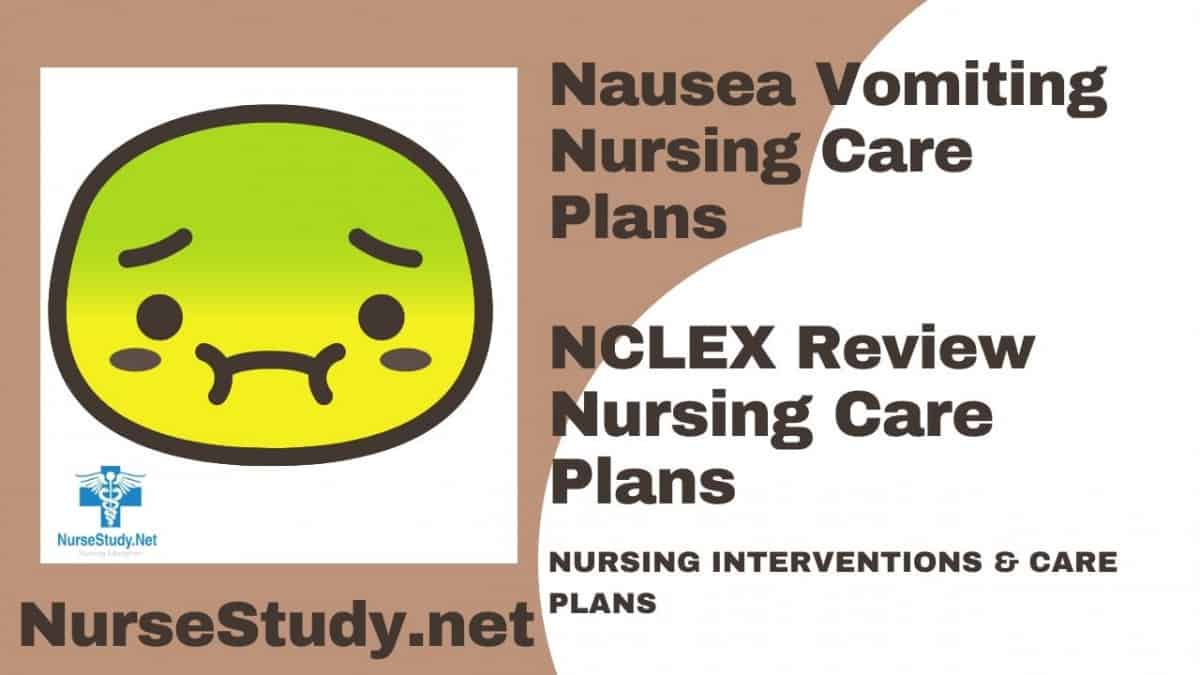Nausea and vomiting are common yet distressing symptoms that significantly impact patient comfort and well-being. Understanding these symptoms from a nursing perspective is crucial for providing effective patient care and implementing appropriate interventions.
What is Nausea and Vomiting?
Nausea is an unpleasant subjective sensation characterized by the urge to vomit, often accompanied by autonomic symptoms such as pallor, sweating, and tachycardia. Vomiting is the forceful expulsion of gastric contents through the mouth, typically preceded by nausea.
Common Causes:
- Gastrointestinal disorders
- Medication side effects (particularly chemotherapy)
- Pregnancy
- Motion sickness
- Post-operative complications
- Metabolic disorders
- Central nervous system conditions
- Psychological factors (anxiety, stress)
Nursing Assessment
A comprehensive nursing assessment should include:
- Detailed history of nausea/vomiting episodes
- Characteristics of emesis (color, consistency, volume)
- Associated symptoms
- Precipitating and alleviating factors
- Impact on daily activities
- Hydration status
- Nutritional status
- Vital signs
Nursing Care Plans
Nursing Care Plan 1. Risk for Deficient Fluid Volume
Nursing Diagnosis Statement:
Risk for deficient fluid volume related to excessive fluid loss through vomiting.
Related Factors:
- Excessive vomiting
- Decreased oral intake
- Altered absorption of fluids
- Electrolyte imbalances
Nursing Interventions and Rationales:
Monitor vital signs every 4 hours
- Rationale: Early detection of dehydration signs
Track strict intake and output
- Rationale: Ensures accurate fluid balance assessment
Assess skin turgor and mucous membranes
- Rationale: Indicates hydration status
Administer IV fluids as ordered
- Rationale: Maintains fluid balance
Encourage oral fluid intake when appropriate
- Rationale: Prevents dehydration
Desired Outcomes:
- The patient maintains adequate hydration
- Vital signs remain within normal limits
- Skin turgor remains elastic
- Mucous membranes remain moist
Nursing Care Plan 2. Imbalanced Nutrition: Less than Body Requirements
Nursing Diagnosis Statement:
Imbalanced nutrition: less than body requirements related to inability to ingest/retain nutrients.
Related Factors:
- Persistent nausea
- Frequent vomiting
- Poor appetite
- Fear of eating
Nursing Interventions and Rationales:
Monitor weight daily
- Rationale: Tracks nutritional status
Offer small, frequent meals
- Rationale: Easier to tolerate than large meals
Provide antiemetics before meals
- Rationale: Reduces nausea during eating
Document food intake
- Rationale: Monitors nutritional adequacy
Consult with dietitian
- Rationale: Ensures appropriate nutrition plan
Desired Outcomes:
- The patient maintains a stable weight
- Demonstrates improved appetite
- Tolerates regular meals
- Shows normal nutritional lab values
Nursing Care Plan 3. Acute Pain
Nursing Diagnosis Statement:
Acute pain related to gastric irritation and repeated vomiting.
Related Factors:
- Gastric inflammation
- Esophageal irritation
- Abdominal muscle strain
- Dehydration headaches
Nursing Interventions and Rationales:
Assess pain characteristics
- Rationale: Guides pain management
Position patient appropriately
- Rationale: Reduces strain and discomfort
Administer prescribed pain medication
- Rationale: Provides relief
Apply cold/hot compress as appropriate
- Rationale: Helps with muscle soreness
Teach relaxation techniques
- Rationale: Reduces tension and anxiety
Desired Outcomes:
- The patient reports decreased pain
- Demonstrates comfort measures
- Maintains normal activity level
- Shows improved facial expression
Nursing Care Plan 4. Anxiety
Nursing Diagnosis Statement:
Anxiety related to persistent symptoms and fear of vomiting in public.
Related Factors:
- Uncertainty about symptom control
- Social embarrassment
- Impact on daily activities
- Fear of underlying condition
Nursing Interventions and Rationales:
Assess anxiety level
- Rationale: Determines intervention needs
Provide emotional support
- Rationale: Reduces stress
Teach coping strategies
- Rationale: Improves self-management
Explain procedures and treatments
- Rationale: Reduces fear of the unknown
Create calm environment
- Rationale: Minimizes anxiety triggers
Desired Outcomes:
- The patient verbalizes reduced anxiety
- Uses effective coping strategies
- Participates in daily activities
- Demonstrates improved confidence
Nursing Care Plan 5. Impaired Comfort
Nursing Diagnosis Statement:
Impaired comfort related to persistent nausea and vomiting.
Related Factors:
- Physical symptoms
- Environmental factors
- Treatment side effects
- Emotional distress
Nursing Interventions and Rationales:
Maintain clean environment
- Rationale: Reduces nausea triggers
Provide frequent oral care
- Rationale: Improves comfort
Use aromatherapy when appropriate
- Rationale: It may reduce nausea
Adjust room temperature
- Rationale: Enhances comfort
Implement relaxation techniques
- Rationale: Promotes well-being
Desired Outcomes:
- Patient reports improved comfort
- Demonstrates use of comfort measures
- Shows reduced distress signs
- Maintains normal sleep pattern
Prevention and Education
- Teach proper hand hygiene
- Educate about dietary modifications
- Instruct on medication timing
- Demonstrate relaxation techniques
- Explain warning signs requiring medical attention
References
- Heckroth M, Luckett RT, Moser C, Parajuli D, Abell TL. Nausea and Vomiting in 2021: A Comprehensive Update. J Clin Gastroenterol. 2021 Apr 1;55(4):279-299. doi: 10.1097/MCG.0000000000001485. PMID: 33471485; PMCID: PMC7933092.
- Lacy BE, Parkman HP, Camilleri M. Chronic nausea and vomiting: evaluation and treatment. Am J Gastroenterol. 2018 May;113(5):647-659. doi: 10.1038/s41395-018-0039-2. Epub 2018 Mar 15. PMID: 29545633.
- Metz A, Hebbard G. Nausea and vomiting in adults–a diagnostic approach. Aust Fam Physician. 2007 Sep;36(9):688-92. PMID: 17885699.
- Niriella MA, Jayasena H, Withanage M, Devanarayana NM, De Silva AP. Chronic nausea and vomiting: a diagnostic approach. Expert Rev Gastroenterol Hepatol. 2022 Apr;16(4):311-320. doi: 10.1080/17474124.2022.2056016. Epub 2022 Mar 22. PMID: 35303783.
- Veiga-Gil L, Pueyo J, López-Olaondo L. Postoperative nausea and vomiting: physiopathology, risk factors, prophylaxis and treatment. Rev Esp Anestesiol Reanim. 2017 Apr;64(4):223-232. English, Spanish. doi: 10.1016/j.redar.2016.10.001. Epub 2016 Dec 29. PMID: 28041609.
